As an aspiring filmmaker, you are probably used to doing almost everything yourself on set. It’s how most of us begin – yelling directions to the actors from behind the camera whilst struggling to keep the shot steady and in focus, only to realise the costume was supposed to be for another scene! Sound frustratingly familiar? It might be time to get yourself a film crew to help spread the load! In this article, we will discuss the main film crew positions you’re likely to encounter, what they do and why they are important. Essentially, without the film crew, films wouldn’t get made.
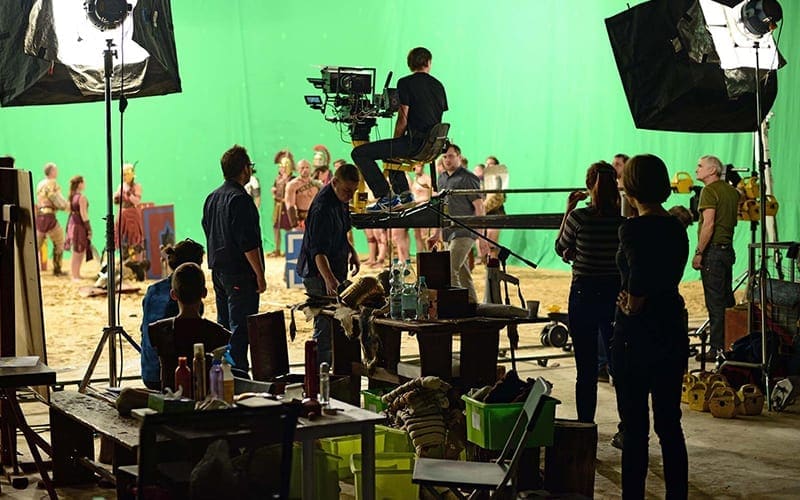
What Is A Film Crew?
Film crews are comprised of technicians, creatives and artists. All of these workers are trying to make the production run as smoothly as possible. The film crew is the overall team that includes various different departments, roles and responsibilities to facilitate the creation of films and motion pictures. The crew is not the same thing as the cast. The cast includes the actors that appear in the film, whereas the crew work to make the film happen. They are the unsung heroes who make the seemingly impossible possible. We will be looking at the production based crew. They are involved when the film is being filmed and created. So, in other words, after the film has been written and planned.
Film Crew Hierarchy
A film production is like a large business. However, instead of working inside a fancy office, the employees are all crammed into the main character’s small, two-bedroom house. Similar to a business, the film production has its own hierarchical structure and is split into departments, each with their own manager or ‘department head’.
Film Crew Roles
Each film crew position can be split into one of two categories: above the line or below the line. These terms come from where the position falls within the budget. To find about more about financing films, check out our article. The above the line roles include the director, producers, writers and actors. Think of them like the CEO’s in our business analogy.
The below the line crew consist of everyone else – from the runners right through to the cinematographer. The most experienced of these are like senior management, and have large amounts of responsibility. The least experienced are your entry-level employees doing the grunt work.
In this article, we will concentrate on below the line positions, as we’ve already covered some above the line positions. For more information, check out our article on what a director does.
Film Crew – Production Office
The production office (headed up by the line producer) is the central hub of the operation. Like a computer’s CPU, every bit of information goes through them. The line producer’s main responsibility is budget handling, as well as managing the day to day operations of production. They work on behalf of the film’s producers to hire crew, allocate budgets to department heads, and keep on top of contracts involved in the production process. The unit production manager (UPM), production coordinator, and office PA’s and runners assist the line producer in these responsibilities. Some of these roles may overlap, or be handled by the same person in a small budget project.
Assistant Directors

Contrary to the job title, the assistant director’s (AD) job isn’t to help the director get a better performance out of the actors, or to tell the camera team where to place the camera. Their job is to manage the on-set activities of a film production, specifically scheduling, time management, and inter-department communication.
As the most senior, the 1st AD will spend their day close to the director. They communicate with other departments to ensure they all know what’s going on, and what shot or scene should be prepped. They are also in charge of safety on set, and making sure the production ‘makes their day’. This means completing all the shots and scenes on the day’s schedule. The 1st AD is assisted by a 2nd AD. Their main responsibility is to schedule the next day’s shooting. The 3rd AD is in charge of wrangling and directing any extras or ‘supporting artists’.
Locations
The locations department is led by the supervising location manager, who comes on board early in pre-production. They break down the script along with the director and other key creative personnel. This is done in order to figure out exactly what type of locations are required. Once the scouts have found locations that fit and are suitable for filming, the supervising location manager will liaise with the location owners and negotiate contracts. The day to day operations of preparing and running a location fall to the location managers and their assistants. They make sure the location is safe, and equipped with facilities such as toilets, parking, water, electricity, and refuse management. Where do you put 200 people when you’re shooting in a small, two-bed house? Well, it’s their job to figure that out.
Camera

The cinematographer or director of photography (DoP), is the head of the camera department. They work with the director to create the visual aesthetic, or ‘look’, of the film. They’ll help choose which camera, lenses and lighting style is most appropriate. Once on set, they will then execute that vision. They are often described as the right-hand man/woman of the director, but also manage the day to day running of the camera department. This includes these roles:
- Camera Operator. They move and operates the camera in the style that the director and DoP sets out
- Steadicam Operator. They operate a specific piece of camera stabilisation equipment called the Steadicam
- First assistant camera (1st AC). They keep the subject in focus, as well as building and breaking down the camera rig at the start and end of each day
- Second assistant camera (2nd AC). They help swap lenses between each new shot, and prepare and operate the clapperboard for each take
- Digital imaging technician (DIT). They help set the correct look for the on-set monitors, and assist the DoP with camera exposure and contrast levels
- Camera trainee. They assist the AC’s to keep the camera equipment clean, tidy and organised
Grip
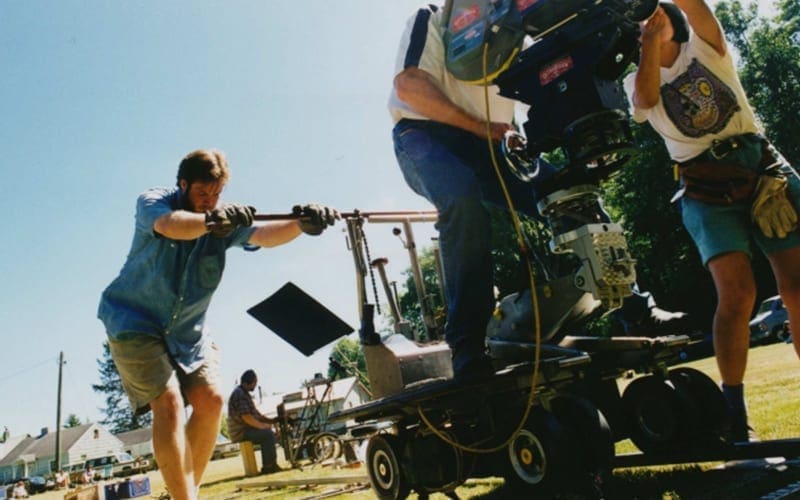
The grip crew are responsible for all the camera mounting and rigging equipment needed for the required shots. This team is headed by the key grip. The key grip is hired by the DoP, and works alongside them and the director in pre-production to determine what pieces of equipment are needed to achieve each shot. Once on set, the key grip will oversee the setting up of:
- Camera dollies
- Cranes
- Vehicle mounts
- Specialist rigging
They must also ensure that it is all safe to operate. The key grip is assisted by the best boy (not necessarily the best, and may even be a girl!), who is second-in-command. They have a team of grips working under them. This includes the dolly grip, who operates the camera dolly during moving shots.
Electric
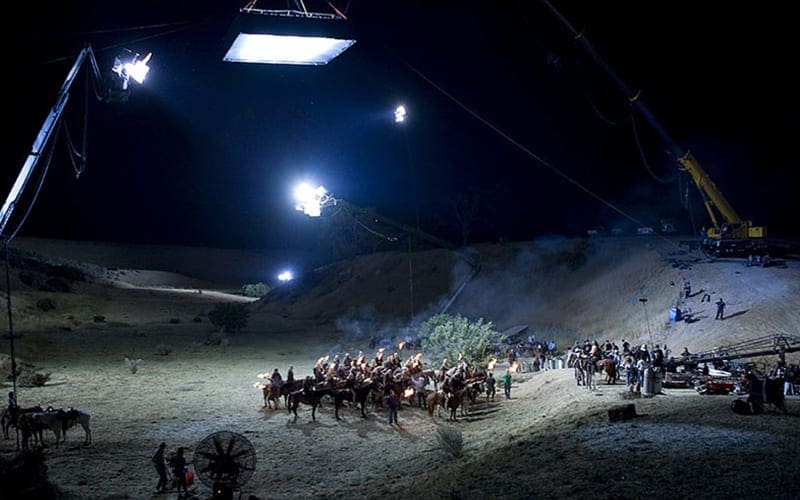
This department is led by the chief lighting technician, or ‘gaffer’. They are also hired by the DoP. The gaffer is the chief electrician on the film set, and works with the DoP to create the required lighting setups. If the cinematographer needs a scene to look like night-time, the gaffer will help them work out what lights are most suitable, how many are needed, and what sort of coloured gels or diffusion will be used. It is the gaffers’ job to make sure this is all done safely and within the limits of the power supply at the location. The gaffer has a whole team of electricians, or ‘sparks’, to assist them.
Art

The art department is one of the largest departments in film production. The head of this department is the production designer. The production designer works closely with the director and DoP to decide on what colours and textures are used for things such as props, set builds, and set dressing. This helps achieve the desired ‘look’ of the film. If a project is a period piece for example, the production designer will assist the DoP with any physical lighting fixtures present in the scene. They can rig things such as gas lamps and torches so that the DoP and gaffer can put brighter modern day bulbs in, to make sure the shot is exposed properly.
Beneath the production designer is the art director. On smaller projects or with smaller film crews, these two terms can be interchangeable, but they are in fact two distinct roles. The art director oversees the design and construction of sets, handles the art department budget, and breaks down the script to work out what props are needed. They will also manage the art department personnel, from set dressers to construction crew.
Costume
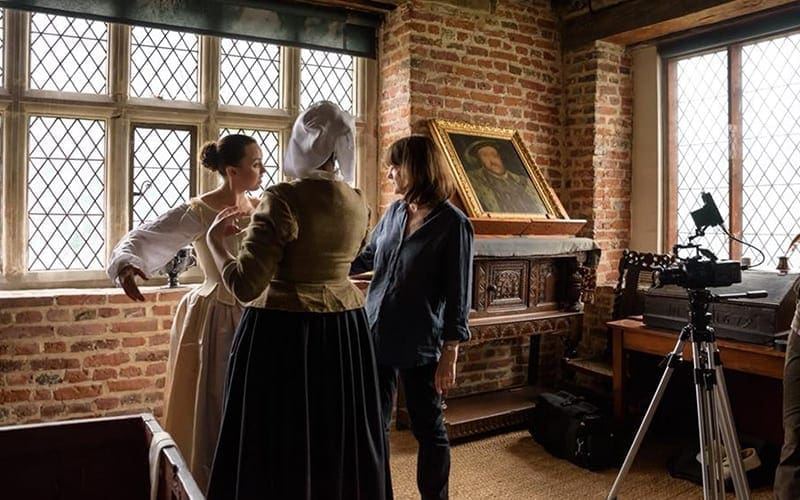
Where do all the clothes that actors wear on-screen come from? Well, that’s the job of the costume designer, who is the head of the costume department. For films set in the modern day, this can be a fairly simple process of acquisition. However, for a period piece, or a Sci-Fi project, this could mean designing and creating every single costume from scratch. The job becomes infinitely more difficult when the film requires a large amount of extras. Just imagine how much time and manpower it would take to design and produce a shires-worth of hobbit clothing! The costume designer is aided by the costume supervisor. Their job is to handle the department’s day-to-day operations, and the costume standby who stays on-set keeping track of quality and continuity. The bigger the cast, the more standbys are required.
Hair & Makeup
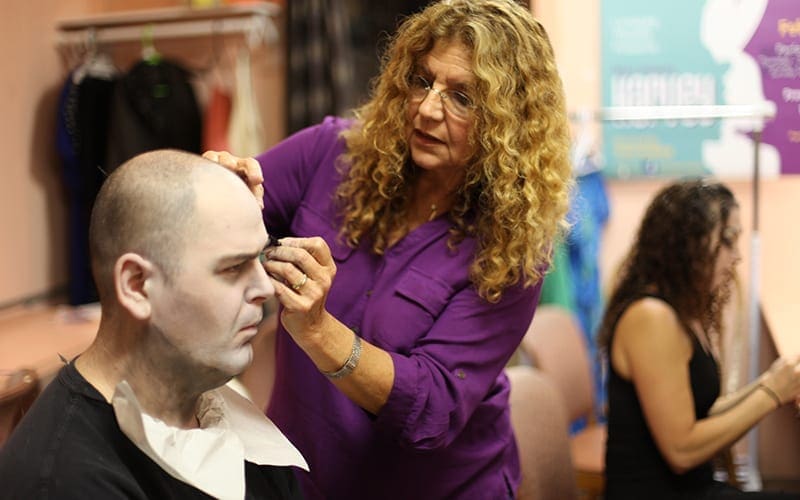
This team is run by the key makeup artist, whose job is two-fold. Firstly, they must plan the makeup designs for the main cast, in line with the director’s vision. They will usually apply makeup to the lead cast members themselves, with their assistants working on supporting characters or extras. For projects that require large amounts of prosthetics or special effects makeup (think Lord of the Rings or Game of Thrones), the team will employ SFX makeup artists who are specialised in these skills.
Sound

The production sound mixer heads up the sound department in a film crew. It is their job to monitor the sound levels during a take from all the different microphones used on set. The type of microphone that is used and where it is placed is key to ensuring that the film’s dialogue is crisp and clear. Boom operators assist the production sound mixer. They hold and operate the overhead microphones called boom mics whilst the scene is being shot. These two roles are often combined into one job on smaller projects. In this case, they are referred to as the ‘sound recordist’. On larger productions, the sound department will be rounded out by the second assistant, who helps setup and move all of the sound equipment used during a day’s filming.
That Was The (Almost) Full Film Crew List!
I wish I could talk about what every single film crew member does, but judging by how long the end credits of a film tend to run, this could take a very long time! You should now have a good understanding of how a film crew is structured, and what the main film crew jobs entail. As an aspiring filmmaker, it is important to understand all of this, as it will allow you to better collaborate with your crew. You may have even read about a film crew position that you didn’t realise existed, and have now discovered your dream job. Also, don’t forget to look at our list of top production companies in the UK and the US!
Music Gateway – Film Sync Opportunities
Would you like to get in touch with Music Gateway to see how we can help you? Then please use this link to get in touch with us to discuss any opportunities such as Sync Licensing, Music Licensing, Music Clearance, Sync Libraries or Music Libraries, etc., you may want to take further. You can book a call with Sam – Head of Sync Licensing – as a potential lead. We are always happy to talk to musicians like you. Please do get in touch.
You can also check out our article on music supervisors. With our concierge and service and extensive music library, allow us to help you find music for your film.









